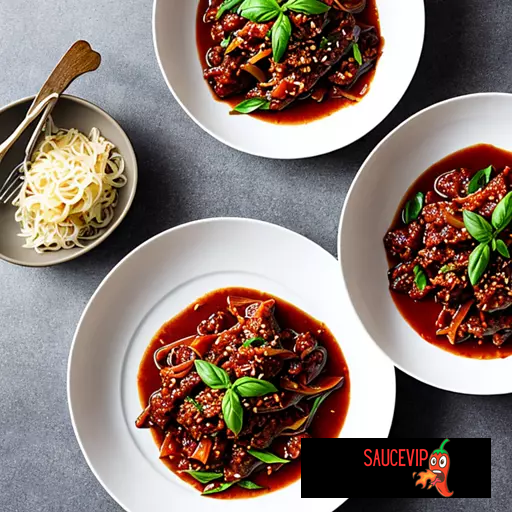Fusion Delight: Exploring the Unique Harmony of Korean and Japanese Influences in Beef Ragu
In the realm of culinary exploration, the fusion of diverse flavors often results in unexpected and delightful combinations. One such intriguing blend is found in a classic Italian-inspired dish: Beef Ragu. Traditionally known for its rich, slow-cooked meat sauce, this dish takes an exciting twist with the incorporation of two distinctive Asian ingredients—Korean gochujang chili paste and Japanese blond miso. In this culinary journey, we will delve into the origins and characteristics of these unexpected additions and explore the art of preparing a tantalizing Beef Ragu that seamlessly marries Italian, Korean, and Japanese influences.
Unveiling the Stars – Gochujang and Miso
1 Gochujang: A Spicy Korean Elixir
Originating from Korea, gochujang is a fermented chili paste that has become a staple in Korean cuisine. Its deep, complex flavor profile combines heat, sweetness, and umami, making it a versatile and beloved condiment. We’ll delve into the history of gochujang and its role in Korean gastronomy, understanding how its unique characteristics elevate the Beef Ragu experience.
2 Miso: The Umami Emissary from Japan
Miso, a traditional Japanese seasoning produced by fermenting soybeans, barley, or rice with salt and koji, brings a rich umami depth to dishes. This section will explore the diverse varieties of miso, focusing on the subtle nuances of blond miso and how its inclusion transforms the texture and flavor of the beef ragu. We’ll also uncover the cultural significance of miso in Japanese cooking.
The Art of Fusion – Harmonizing Flavors in Beef Ragu
1 Gochujang and Miso: A Culinary Tango
Understanding the synergy between gochujang and miso is essential to achieving a harmonious fusion. We’ll explore how these two ingredients complement each other, creating a balance of spice, sweetness, and umami that enhances the traditional Italian flavors of the ragu. Tips on selecting the right proportions and the best brands for these Asian staples will be covered.
2 Adapting the Traditional Recipe
This section will guide readers through the step-by-step process of adapting a classic Italian beef ragu recipe to incorporate gochujang and miso. From selecting the right cut of beef to mastering the slow-cooking technique, we’ll explore how to preserve the essence of the Italian dish while infusing it with a Korean-Japanese twist. The incorporation of gochujang and miso will be detailed, providing insights into the nuances of timing and proportion.
Enhancing the Culinary Experience – Serving and Pairing
1 Presentation Matters: Plating the Fusion Masterpiece
A well-presented dish enhances the overall dining experience.
In this section, we’ll discuss creative ways to plate the beef ragu to showcase the fusion of Italian, Korean, and Japanese influences. From selecting the right serving vessel to garnishing with fresh herbs, the visual appeal of the dish will be explored.
2 Wine, Sake, or Soju? Pairing Beverages with Fusion Cuisine
Pairing the right beverage with your beef ragu is crucial to elevating the dining experience. We’ll explore suitable wine options for traditional Italian beef ragu and how the addition of gochujang and miso might influence the pairing.
Additionally, we’ll delve into Japanese sake and Korean soju choices, providing a comprehensive guide for creating a well-rounded dining experience.
The fusion of Korean and Japanese flavors into a classic Italian dish exemplifies the boundless possibilities of culinary creativity. Through the exploration of gochujang and miso in beef ragu, we’ve witnessed the harmonious marriage of diverse culinary traditions. This fusion delight not only tantalizes the taste buds but also opens the door to endless experimentation in the kitchen. As culinary enthusiasts embark on their own journey of exploration, the beef ragu with gochujang and miso stands as a testament to the exciting possibilities that arise when different culinary worlds collide.

